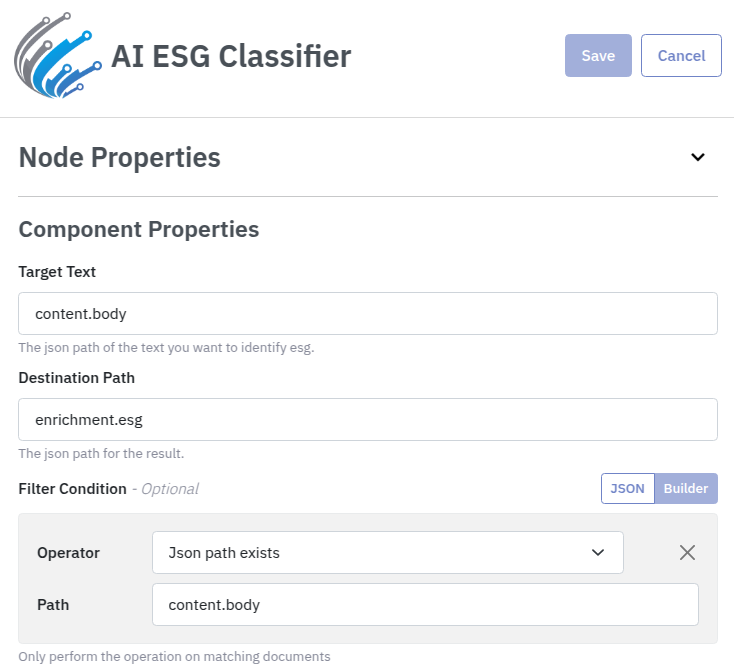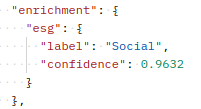AI ESG Classifier
Automate ESG Data Analysis with AI-Powered Classification
The AI ESG Classification system enables customer to automatically classify Environmental, Social, and Governance (ESG) data from diverse sources, including news, reports, and social media at scale. This categorisation system helps organisations assess ESG risks, compliance, and trends in real time, improving decision-making and regulatory adherence.
Powered by Google Gemini 2.0 Flash, the AI ESG Classifier achieves high accuracy, efficiently identifying ESG-related themes and categorizing them into structured outputs for better decision-making and risk management.
Adding to your Dynamic Pipeline
This component can be seamlessly integrated into your Dynamic pipelines through the "AI ESG Classifier" component. It requires the following fields for configuration:
Destination Path (Required): The "enrichment.esg" field is designated to store the esg output. This output includes a esg label—one of these possible labels (Environment, Social and Government and Other)—alongside a confidence score ranging from 0 to 1, reflecting the model's certainty for each esg theme detected. Other category identifies content that does not directly relate to ESG categories but may still be useful for broader analysis.
Target Text (Required): This is the metadata field containing the input text for esg analysis. By default, it’s set to content.body, but any field containing relevant text can be used.
If the Gemini Model encounters safety issues with certain content, you will find that Gemini API failed to generate output.
Dynamic Pipeline Configuration Example
The following example shows a dynamic pipeline configuration for the AI ESG Classifier component. If Unify is the preceding step in your pipeline, you can set it up as follows:
- content.body from the input document is specified as the Target Text for the AI ESG Classifier.
- enrichment.esg is designated as the Destination Path for storing the AI ESG Classifier output.


Updated about 19 hours ago
